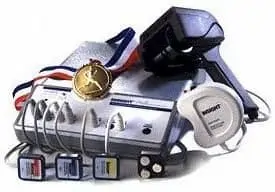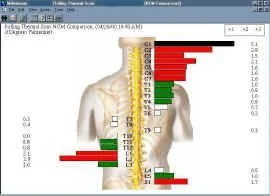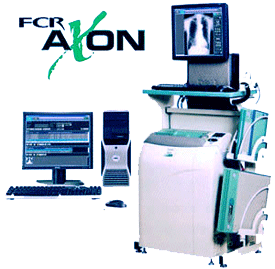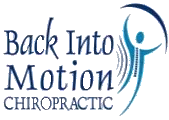First Visit
OBe ready to provide your medical history, which will be essential for preparing a course of treatment for you. Medical records, such as diagnostic test results, or imaging results, such as X-rays and MRIs, also will provide important information about your condition.
Certain things in your health history are particularly vital to a chiropractor. This information could provide important clues that will allow your chiropractor to properly diagnose your problem.
Such clues include whether you have had:
• Bone disorders, such as osteoporosis
• Circulatory problems (poor circulation could be a sign that you have a subluxation, for example_
• Dizziness or blurred vision
• Heart conditions such as hypertension or high blood pressure
• Infections, especially those affecting your spine
• Injuries, such as bone fractures, muscle sprains, or disc injuries
• Joint disorders such as arthritis
• Sleep apnea
Be prepared to answer such questions as:
• Did the onset of your pain immediately follow an injury?
• Is there anything you do that improves or worsens the pain?
• When and how did your pain start?
• Where is the pain centered?
Your examination will also include a computerized examination called the "Insight Millennium Subluxation Examination." This examination involves several important components.

The first part of this examination process involves reading spinal heat differences from one level of the spine to another, as well as from one side of the spine to the other. Heat is a by-product of circulation, which is controlled by the autonomic nervous system. From this we can see how subluxation may be affecting these functions of your nervous system.


The importance of each of these tests will
be explained to you at your Report of Findings. However, it is important to note that this examination helps scientifically understand the subluxation processes going on in your spine. It also gives us a baseline for future tests so we can accurately measure your progress to see how your spine is correcting and your nervous system is functioning. Using the Insight Millennium Subluxation Examination is much more accurate than
just depending on "how you feel" on any given day.
The physical exam
Here is what to expect:
The first order of business is checking your vital signs, reflexes and blood pressure.
Sometimes measurements will be taken to determine the arm and leg length. Next you will be asked to do a series of simple and easy activities or exercises. These exercises will provide information about your motor skills, balance, and gait, among others. These tests also help determine your range of motion, muscle tone and strength, and integrity of your nervous system. Any abnormalities could provide clues about a condition.
You may be asked to:
• Bend forward, sideways, or backwards-misaligned spinal vertebrae can sometimes be detected during this exercise.
• Flex and extend your leg- this is attest for signs of sprain and helps determine the integrity of your joints
• Grip something such as a rubber ball- your grip strength is vital for showing signs of muscular or nerve damage
• Lie down and raise one leg- the chiropractor gently pushes on your raised leg to check for hip joint mobility.
• Stand and raise one leg- this test can sometimes show whether you have a sciatica, a nerve disorder in you lower back. Another test may involve pushing on your raised leg to determine whether you have pain, inflammation or imbalance in the joints between your spinal vertebrae.
• Stand and sit- posture can sometimes show whether you have a misalignments in your spine.
• Walk a straight line- This test measures your gait, and helps to determine if you have a normal walking pattern.
• Walk in place- Abnormalities in the way your pelvis and spine coordinate can be seen during the test.
Next, a short physical exam by the chiropractor will involve palpation, or use of the hands to explore the alignment of your spine and other structures, as well as provide information on any stimuli that may cause pain. Depending on your condition, a series of diagnostic tests may follow. These tests may include MRIs, CT scans, X-rays, blood work, and other laboratory tests.
The chiropractor may also consult with you about making important lifestyle changes, such as exercise, nutrition, and smoking cessation to improve your chances of healing faster or preventing further injury.
Here at Back Into Motion Chiropractic we have invested in some of the latest technology with the installation of state-of-the-art digital x-ray processing equipment using Fuji FCR package, which allows us to take very fast, efficient and high quality digital X-rays within seconds.
Patient Benefits:
- Faster First Appointments
- Increased image quality
- No film or chemicals used (Environmentally Friendly!)
- Faster and Improved Analysis
- CD Burning of images for improved portability

Complete x-ray studies allow for a more detailed analysis of your spinal column. Chiropractors are specifically trained in the identification of spinal misalignments and determining bone alignment from x-rays. This information is used in conjunction with the history you provide and the clinical examination findings to help us arrive at a diagnosis.
